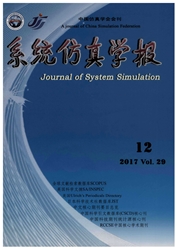

 中文摘要:
中文摘要:
采用“制体”方法建立燃料电池堆空气供应系统的供应管腔、阴极和回流管腔模型,并采用神经网络方法对风机特性测试数据进行拟合,建立风机转速、出口压力和风量的关系模型。运用Simulink仿真工具建立仿真模型,研究风机转速和回流管腔系数对氧气供应的影响,并对电堆电流阶跃变化对氧气供应的影响进行仿真。仿真结果和实验测试数据相符,表明所建模型是有效的,可以指导电堆阴极结构的设计和空气供应系统控制方法的研究。
 英文摘要:
英文摘要:
Model of supply manifold, cathode and return manifold control volume and fan model of speed, outlet pressure and quantity in air supply system was built by utilizing method of was built by utilizing neural network to fit the curve of fan based on measured data. Then simulation model was developed with Simulink @ Matlab to evaluate how fan speed and coefficient of return manifold affect supply of oxygen and how current's step change of fuel cell stack affects supply of oxygen. Simulation results are consistent with measured data and show that the model of air supply system is true and this model can instruct design of cathode's structure and controller of air supply system.
 同期刊论文项目
同期刊论文项目
 同项目期刊论文
同项目期刊论文
 Fractal model for predicting the effective binary oxygen diffusivity of the gas diffusion layer in p
Fractal model for predicting the effective binary oxygen diffusivity of the gas diffusion layer in p Fractal model for prediction of effective thermal conductivity of gas diffusion layer in proton exch
Fractal model for prediction of effective thermal conductivity of gas diffusion layer in proton exch 期刊信息
期刊信息
